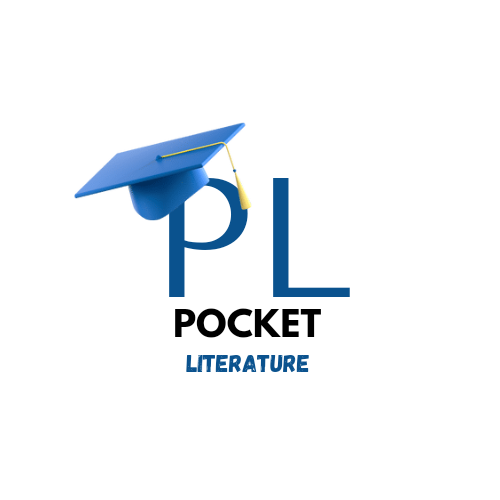1. History of the Romantic Age
- The Romantic Age emerged as a reaction against the rationalism and restraint of the Neoclassical Age.
- Influenced by the French Revolution (1789), which sparked ideals of liberty and emotion, and the Industrial Revolution, which fueled a longing for nature.
- It flourished in England from the late 18th century to the mid-19th century.
2. Start and End of the Romantic Age
- Start: Dated to 1798 with the publication of Lyrical Ballads by William Wordsworth and Samuel Taylor Coleridge.
- End: Faded by 1837 with the onset of the Victorian Age, though its influence lingered into the 1850s.
3. The Five "I's" of the Romantic Era
- Imagination: Creativity as a means to transcend reality.
- Intuition: Emotion and instinct over logic.
- Individualism: Celebration of the unique self.
- Inspiration: Nature and beauty as artistic muses.
- Idealism: Pursuit of higher truths and utopian ideals.
4. Characteristics of Romanticism
* Emphasis on emotion, imagination, and spontaneity.
* Reverence for nature as a spiritual and aesthetic force.
* Fascination with the sublime, the past, and the supernatural.
* Rejection of Neoclassical rules in favor of originality.
5. Neoclassical vs. Romanticism
Neoclassical Age:
Reason, order, and classical models.
Urban focus, structured poetry (e.g., heroic couplets).
Key figures: Alexander Pope, John Dryden.
Romantic Age:
Emotion, freedom, and nature.
Lyrical, personal poetry and prose.
Key figures: Wordsworth, Shelley, Keats.
6. Famous Romantic Poets and Their Works
William Wordsworth: Lyrical Ballads, The Prelude – nature and the common man.
Samuel Taylor Coleridge: The Rime of the Ancient Mariner, Kubla Khan – supernatural and imagination.
Lord Byron: Childe Harold’s Pilgrimage, Don Juan – Byronic hero.
Percy Bysshe Shelley: Ode to the West Wind, Prometheus Unbound – idealism and rebellion.
John Keats: Ode to a Nightingale, Ode on a Grecian Urn – beauty and transience.
7. Names of Romantic Poets
i) William Wordsworth,
ii) Samuel Taylor Coleridge,
iii) Lord Byron,
iv) Percy Bysshe Shelley,
v) John Keats,
vi) William Blake,
vii) Robert Southey.
8. Jane Austen in the Romantic Age
Jane Austen (1775–1817): A transitional figure.
Works: Pride and Prejudice, Sense and Sensibility, Emma.
Style: Satirical and realistic, with subtle Romantic elements like individual choice.
9. Writers of the Romantic Age
#Poets: Wordsworth, Coleridge, Byron, Shelley, Keats, Blake.
#Novelists: Sir Walter Scott (Ivanhoe), Mary Shelley (Frankenstein), Jane Austen.
#Essayists: Charles Lamb, William Hazlitt, Thomas De Quincey.
10. Achievements of the Romantic Age
@ Revival of lyrical poetry and rise of gothic/historical novels.
@ Establishment of nature and individualism as literary staples.
@ Influence on modern thought and later literary movements.
11. Romantic Themes Explored
- Emotion and Passion: Focus on feelings as authentic truth (e.g., Keats’ Ode to a Nightingale).
- Nature as a Spiritual Force: Nature as a healer and teacher (e.g., Wordsworth’s Tintern Abbey).
- The Sublime: Awe and terror in vastness (e.g., Coleridge’s The Rime of the Ancient Mariner).
- Imagination and Creativity: Supreme faculty for transcendence (e.g., Coleridge’s Kubla Khan).
- Individualism and the Heroic Self: The solitary rebel (e.g., Byron’s Byronic hero).
- Rebellion Against Authority: Defiance of norms (e.g., Shelley’s Prometheus Unbound).
- Nostalgia and the Past: Romanticized history (e.g., Scott’s Ivanhoe).
- The Supernatural and Mysticism: Exploration of the unknown (e.g., Mary Shelley’s Frankenstein).
- Transience and Mortality: Beauty in the fleeting (e.g., Keats’ Ode on a Grecian Urn).
- Exoticism and the "Other": Fascination with distant lands (e.g., Byron’s The Giaour).
- Idealism and Utopian Visions: Hope for a better world (e.g., Shelley’s Ode to the West Wind).
- The Common Man and Simplicity: Dignity in ordinary life (e.g., Wordsworth’s Lyrical Ballads).
12. Summary of the Romantic Age
- Spanning 1798–1837, the Romantic Age shifted literature from reason to emotion, celebrating nature, imagination, and the individual. Poets like Wordsworth and Keats, novelists like Scott and Mary Shelley, and essayists like Lamb shaped its legacy.
13. Conclusion
The Romantic Age was a dynamic era that redefined literature through its focus on human spirit and creativity. Its themes and works continue to inspire, offering timeless insights into emotion, nature, and individuality.
This revised article now includes a thorough exploration of Romantic themes, enhancing its depth while keeping it concise and exam-friendly. Let me know if you need further adjustments!

